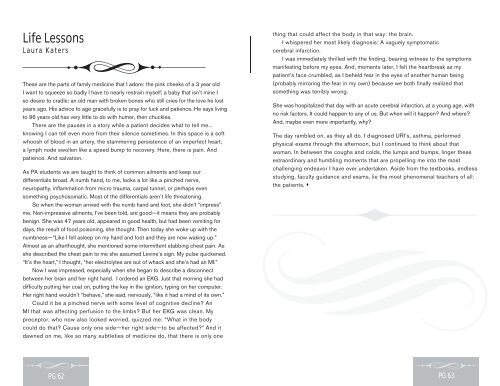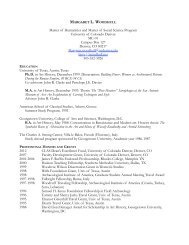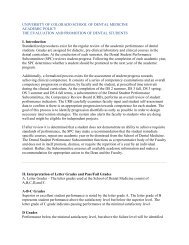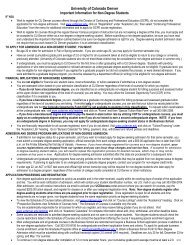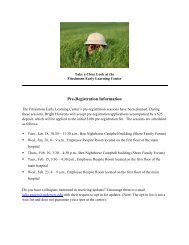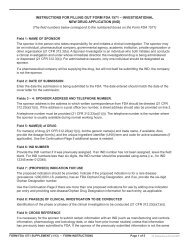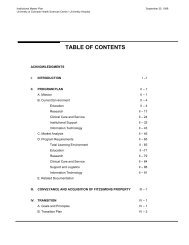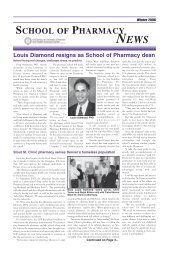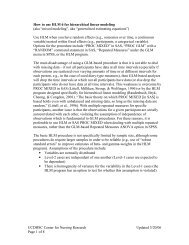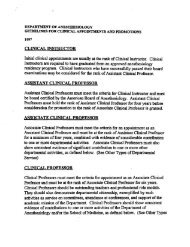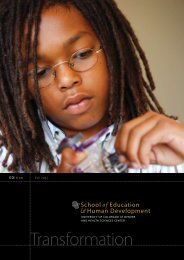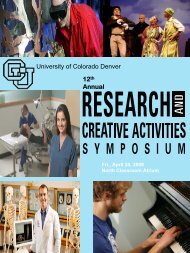The Human Touch 2013 - University of Colorado Denver
The Human Touch 2013 - University of Colorado Denver
The Human Touch 2013 - University of Colorado Denver
You also want an ePaper? Increase the reach of your titles
YUMPU automatically turns print PDFs into web optimized ePapers that Google loves.
Life Lessons<br />
Laura Katers<br />
<strong>The</strong>se are the parts <strong>of</strong> family medicine that I adore: the pink cheeks <strong>of</strong> a 3 year old<br />
I want to squeeze so badly I have to nearly restrain myself; a baby that isn’t mine I<br />
so desire to cradle; an old man with broken bones who still cries for the love he lost<br />
years ago. His advice to age gracefully is to pray for luck and patience. He says living<br />
to 96 years old has very little to do with humor, then chuckles.<br />
<strong>The</strong>re are the pauses in a story while a patient decides what to tell me...<br />
knowing I can tell even more from their silence sometimes. In this space is a s<strong>of</strong>t<br />
whoosh <strong>of</strong> blood in an artery, the stammering persistence <strong>of</strong> an imperfect heart,<br />
a lymph node swollen like a speed bump to recovery. Here, there is pain. And<br />
patience. And salvation.<br />
As PA students we are taught to think <strong>of</strong> common ailments and keep our<br />
differentials broad. A numb hand, to me, looks a lot like a pinched nerve,<br />
neuropathy, infl ammation from micro trauma, carpal tunnel, or perhaps even<br />
something psychosomatic. Most <strong>of</strong> the differentials aren’t life threatening.<br />
So when the woman arrived with the numb hand and foot, she didn’t “impress”<br />
me. Non-impressive ailments, I’ve been told, are good—it means they are probably<br />
benign. She was 47 years old, appeared in good health, but had been vomiting for<br />
days, the result <strong>of</strong> food poisoning, she thought. <strong>The</strong>n today she woke up with the<br />
numbness—“Like I fell asleep on my hand and foot and they are now waking up.”<br />
Almost as an afterthought, she mentioned some intermittent stabbing chest pain. As<br />
she described the chest pain to me she assumed Levine’s sign. My pulse quickened.<br />
“It’s the heart,” I thought, “her electrolytes are out <strong>of</strong> whack and she’s had an MI.”<br />
Now I was impressed, especially when she began to describe a disconnect<br />
between her brain and her right hand. I ordered an EKG. Just that morning she had<br />
diffi culty putting her coat on, putting the key in the ignition, typing on her computer.<br />
Her right hand wouldn’t “behave,” she said, nervously, “like it had a mind <strong>of</strong> its own.”<br />
Could it be a pinched nerve with some level <strong>of</strong> cognitive decline? An<br />
MI that was affecting perfusion to the limbs? But her EKG was clean. My<br />
preceptor, who now also looked worried, quizzed me: “What in the body<br />
could do that? Cause only one side—her right side—to be affected?” And it<br />
dawned on me, like so many subtleties <strong>of</strong> medicine do, that there is only one<br />
thing that could affect the body in that way: the brain.<br />
I whispered her most likely diagnosis: A vaguely symptomatic<br />
cerebral infarction.<br />
I was immediately thrilled with the fi nding, bearing witness to the symptoms<br />
manifesting before my eyes. And, moments later, I felt the heartbreak as my<br />
patient’s face crumbled, as I beheld fear in the eyes <strong>of</strong> another human being<br />
(probably mirroring the fear in my own) because we both fi nally realized that<br />
something was terribly wrong.<br />
She was hospitalized that day with an acute cerebral infarction, at a young age, with<br />
no risk factors. It could happen to any <strong>of</strong> us. But when will it happen? And where?<br />
And, maybe even more importantly, why?<br />
<strong>The</strong> day rambled on, as they all do. I diagnosed URI’s, asthma, performed<br />
physical exams through the afternoon, but I continued to think about that<br />
woman. In between the coughs and colds, the lumps and bumps, linger these<br />
extraordinary and humbling moments that are propelling me into the most<br />
challenging endeavor I have ever undertaken. Aside from the textbooks, endless<br />
studying, faculty guidance and exams, lie the most phenomenal teachers <strong>of</strong> all:<br />
the patients. •<br />
PG 62<br />
PG 63


